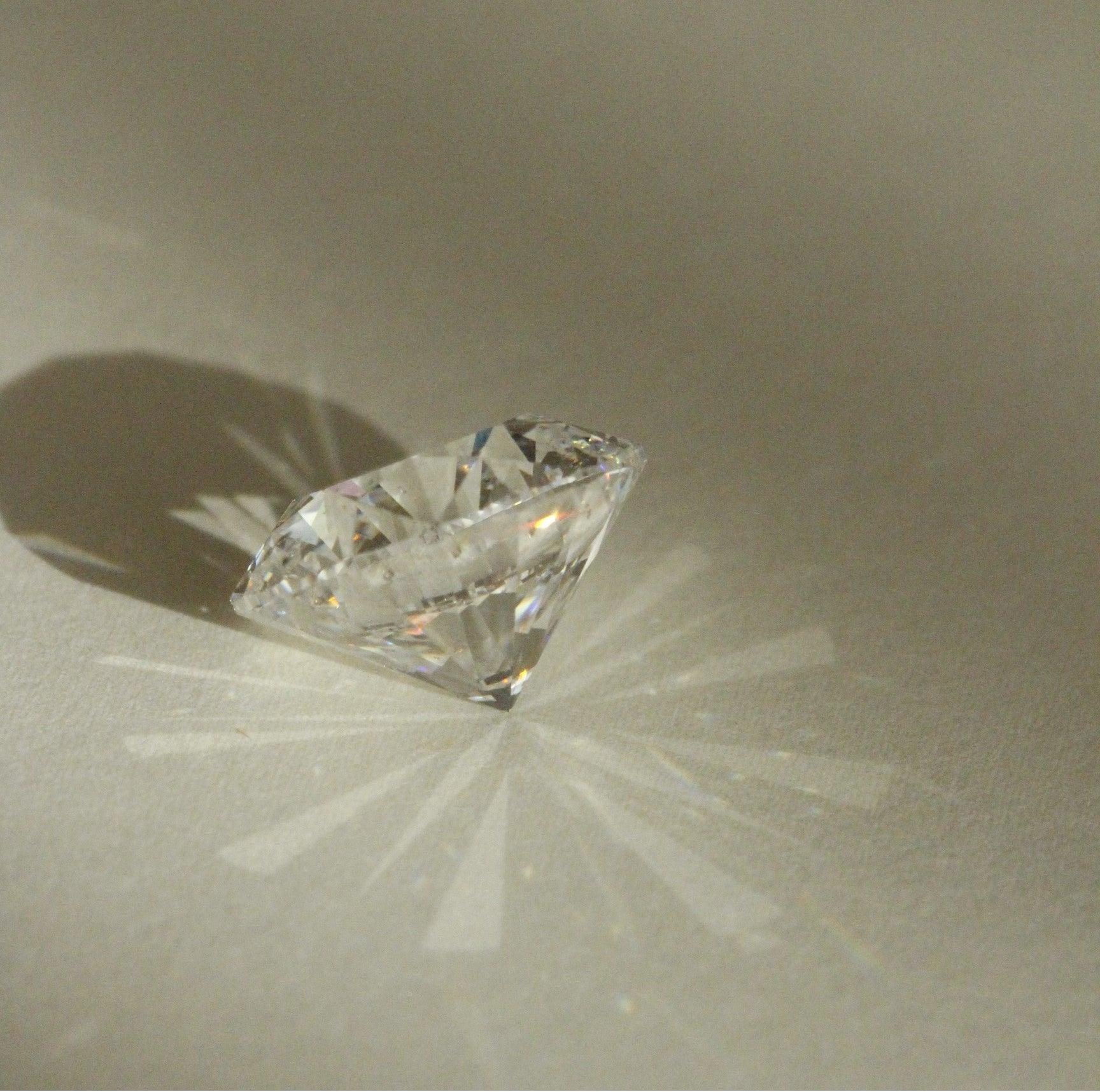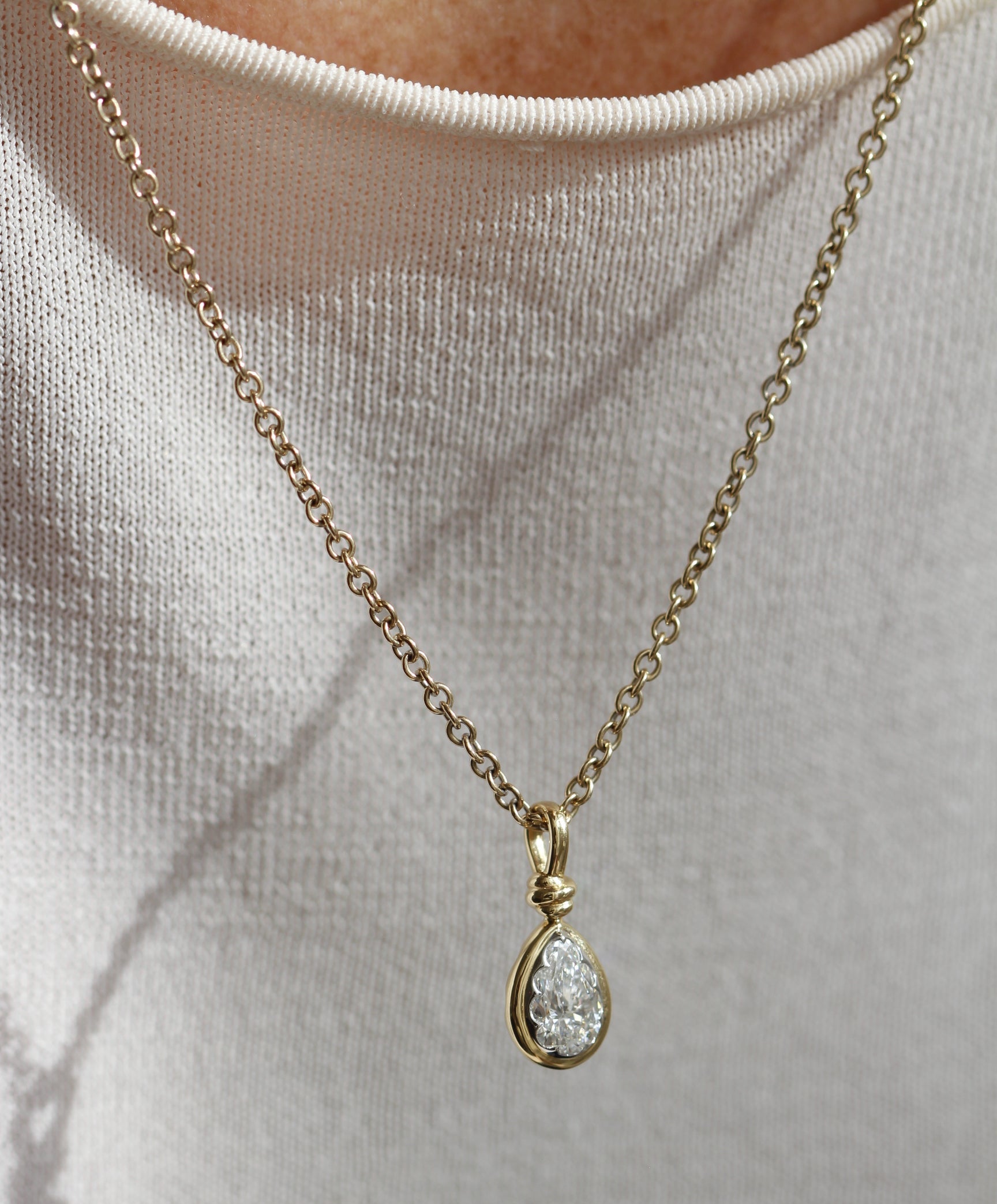
Discovering Diamonds at Orsini Fine Jewellery
Diamonds are not difficult or complicated to purchase if you understand the key aspects of quality. At Orsini we ensure that our customers understand about the diamonds they purchase. A simple way to assess the quality of a diamond is the ‘4 Cs’ – cut, colour, clarity and carat-weight. Determining the shape of the diamond is also a very important decision as this impacts on the style and design of the ring. The following information is some of the basics around diamond grading.
Cut
The cut of a diamond describes the technique in which a diamond has been shaped and polished from its beginning form as a rough stone to its final proportions. The cut of a diamond describes the quality of workmanship and the angles to which a diamond is cut. Diamonds with a high cut grade will have a high degree of brightness and sparkle.
There are mathematical guidelines for the angles and length ratios at which the diamond is supposed to be cut in order to reflect the maximum amount of light. Round brilliant diamonds, the most common, are guided by these specific guidelines, though fancy cut stones are not able to be as accurately guided by mathematical specifics.
Cut is one of the most important factors to consider with a round brilliant cut diamond if you are after maximum sparkle.
Colour
Colour can be judged with the naked eye – a poor diamond can appear quite yellow. The Gemological Institute of America (GIA) set an alphabet scale as the colour-grading standard. The best and most expensive diamonds are rated D, and the lower quality diamonds are rated Z. Using the G.I.A. colour grading scale, the average colour grades are ‘H I J’ as highlighted below.
D E F G H I J K L M N O P Q R S T U V W X Y Z
Diamonds that are closer to the D end of the colour grading scale are more expensive, while diamonds that are closer to the Z end of the scale are less expensive. The Z colour is the same as a glass of iced tea, however the D colour as the same as a glass of perfectly clear water.
Clarity
Clarity is a measure of natural internal defects of a diamond called inclusions. Inclusions may be crystals of a foreign material or another diamond crystal, or structural imperfections such as tiny cracks that can appear whitish or cloudy. The number, size, color, location, orientation, and visibility of inclusions can all affect the relative clarity of a diamond. The Gemological Institute of America (GIA) has also set guidelines relating to clarity grading of diamonds. Diamonds are graded under 10x magnification. The G.I.A. Clarity grading system is as follows:
FL = “Flawless”. No flaws visible to a trained jeweller under 10 X magnification. Other properties of the diamond are absolutely perfect.
IF = “Internally Flawless”. No flaws visible inside the diamond. There may be some surface imperfections, or problems with the cut or polish of the diamond
VVS1 = “Very Very Slightly Included 1″. Flaws or imperfections are barely detectable to the trained eye under 10 X magnification.
VVS2 = “Very Very Slightly Included 2″. Flaws or imperfections that are almost undetectable to the trained eye under 10 X magnification. Just slightly lower in clarity than a VVS1.
VS1 = “Very Slightly Included 1″. Flaws or imperfections that are slightly detectable to the trained eye under 10 X magnification. Just slightly lower in clarity than a VVS2.
VS2 = “Very Slightly Included 2″. Flaws or imperfections that are detectable to the trained eye under 10 X magnification. Just slightly lower in clarity than a VS1.
SI1 = “Slightly Included 1″. Flaws or imperfections that are relatively easy to detect under 10 X magnification. Just slightly lower in clarity than a VS2.
SI2 = “Slightly Included 2″. Flaws or imperfections that are very easy to detect under 10 X magnification. Just slightly lower in clarity than a SI1. This is the last clarity grade where no flaws are visible to the naked eye (assuming normal vision).
SI3 = “Slightly Included 3″. Flaws or imperfections that are extremely easy to detect under 10 X magnification. There is a slight possibility of detecting the flaws with the naked eye. At present the G.I.A. does not recognize SI3 as a clarity grade. Only the E.G.L. (European Gemological Laboratory) uses the SI3 clarity grade designation.
I1 = “Imperfect 1″. Flaws or imperfections that are barely detectable with the naked eye (with normal eyesight).
I2 = “Imperfect 2″. Flaws or imperfections that are easy to detect with the naked eye (with normal eyesight).
I3 = “Imperfect 3″. Flaws or imperfections that are extremely easy to detect with the naked eye (with normal eyesight).
Diamonds are graded by the major societies on a scale ranging from flawless to imperfect. Flawless is classified as ‘FL’.
FL IF VVS1 VVS2 VS1 VS2 SI1 SI2 SI3 I1 I2 I3
The clarity grades SI1 and SI2 are underlined because they reflect “average” clarity grading. SI2 is the last clarity grade where a diamond should demonstrate no visible flaws to the naked eye. Those that do not have a visible inclusion are known as “eye-clean” and are preferred by most buyers.
4. Carat – weight
Diamonds are weighed in carats, or fractions of carats. For example, the weight of a 1-carat diamond will be written as 1.00 ct. and said as “1 carat” or “100 points”, and if a diamond were to weigh fractionally more than 1 carat eg. 1.01 cts, this would be called “one hundred and one points”. It is important to realise that it is not about the physical size of a diamond, it is all about the weight on an electronic scale.
The price per carat does not increase smoothly with increasing size. Instead, there are sharp jumps around milestone carat weights, as demand is much higher for diamonds weighing just more than a milestone than for those weighing just less. As an example, a 0.95 carat diamond may have a significantly lower price per carat than a comparable 1.05 carat diamond, because of differences in demand.
Shape
Diamonds do not show all of their beauty as rough stones; instead, they must be cut and polished to exhibit the characteristic fire and brilliance that diamond gemstones are known for. Diamonds are cut into a variety of shapes that are generally designed to accentuate these features.
There are a wide variety of shapes, or cutting styles, and there are even variations in cutting style for every shape. The more popular shapes for diamonds are: round, cushion, marquise, princess, oval, pear, triangular, emerald and radiant. The less common and far more expensive are the star and crescent-shaped diamonds.
The preferred shape of a diamond is a very personal choice, the most popular by far still remains the round brilliant cut diamond as the brilliance and sparkle of the diamond is accentuated with the faceting, especially with the excellent ideal cut diamonds.
Diamond Grading Reports:
There are two organisations that are the largest and most respected for diamond grading:
Gemological Institute of America (GIA)
Diamond High Council (HRD)
It is important if you are purchasing on the internet to obtain independent gradings of diamonds as it gives you ‘peace of mind’. You can be reassured that the grading of the diamond is appropriate to that diamond. Please note that at Orsini Fine Jewellery, we provide grading reports for all individual diamonds greater than .50 carats.





